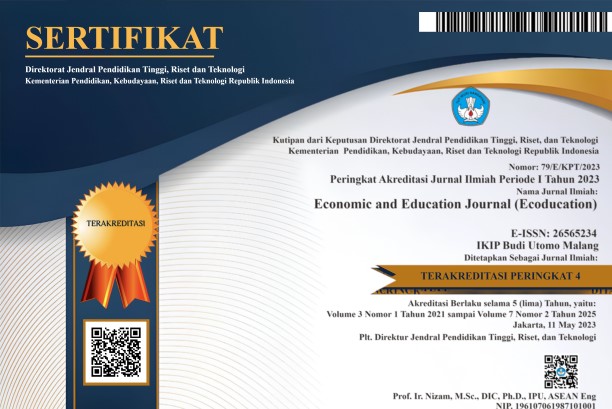Elderly Informal Workers and Elderly Supporting Capacity Ratio in Indonesia
Abstract
The proportion of the elderly population in Indonesia continues to increase. The implication of population aging is the low carrying capacity ratio which triggers the elderly to keep working. The need for leisure is increasing in the elderly, but almost half of the elderly in Indonesia still work. This study aims to look at the characteristics of the elderly who still work in the informal sector. This study also portrays the correlation between the carrying capacity ratio and social security ownership with the number of elderly workers by province. The secondary data used in this study is the 2018 national labor force survey data. The method used to answer this study is Pearson correlation analysis and binary logistic regression. The correlation analysis findings show that the higher the carrying capacity ratio of the elderly, the less elderly who work in a province. Social security in the elderly has a negative relationship with the number of elderly people who work. An interesting finding from the logit model is that the elderly with disabilities, both minor and moderate, are more inclined to work in the informal sector than the elderly who are not disabled. Low and secondary education in the elderly has a higher tendency to work in the informal sector than the elderly who have high education
References
Adioetomo, S. M., & Mujahid, G. (2014). Youth in Indonesia (2).
Badan Pusat Statistik. (2019). Statistik Penduduk Lanjut Usia 2019. Badan Pusat Statistik.
Berglund, T., Seldén, D., & Halleröd, B. (2017). Factors Affecting Prolonged Working Life for the Older Workforce: the Swedish Case . In Nordic Journal of Working Life Studies (Vol. 7, Issue 1, p. 19). Nordic Journal of Working Life Studies . https://doi.org/10.18291/njwls.v7i1.81396
Borjas. (2010). Labor Economics (5th ed.). Mc-Graw-Hill/Irwin.
Chen, F. (2005). Residential Patterns of Parents and Their Married Children in Contemporary China: A Life Course Approach . In Population Research and Policy Review (Vol. 24, Issue 2, pp. 125–148). Springer . https://doi.org/10.1007/s11113-004-6371-9
Hermalin, A. I. (2002). The well-being of the elderly in Asia: a four-country comparative study. University of Michigan Press.
Nachrowi, D. N., & Usman, H. (2002). Penggunaan Teknik Ekonometri. Rajawali Press.
Nilsson, A. (2015). Who suffers from unemployment?: The role of health and skills . In IZA Journal of Labor Policy (Vol. 4, Issue Art. 19, pp. 24-4:Art. 19<24). Springer Berlin Heidelberg . https://doi.org/10.1186/s40173-015-0046-5
Ropik, A. (2013). Faktor-faktor yang memengaruhi lansia bekerja menurut lapangan pekerjaan (Analisis data susenas 2013). Universitas Indonesia.
Thorlacius, S., & Ólafsson, S. (2012). From unemployment to disability? Relationship between unemployment rate and new disability pensions in Iceland 1992-2007 . In The European Journal of Public Health (Vol. 22, Issue 1, pp. 96–101). Oxford University Press . https://doi.org/10.1093/eurpub/ckq186
United Nations. (2019). Population Data. World Population Prospect 2019. https://population.un.org/wpp/Download/Standard/Population/
United Nations Population Fund, & Help Age International. (2012). Ageing in the Twenty-First Century : A celebration and A Challenge. UNFPA.
Vodopivec, M., & Arunatilake, N. (2011). Population Aging and Labour Market Participation of Old Workers in Sri Lanka . In Journal of Population Ageing (Vol. 4, Issue 3, pp. 141–163). Springer Netherlands . https://doi.org/10.1007/s12062-011-9045-5
Vodopivec, M., Finn, D., Laporšek, S., Vodopivec, M., & Cvörnjek, N. (2019). Increasing Employment of Older Workers: Addressing Labour Market Obstacles . In Journal of Population Ageing (Vol. 12, Issue 3, pp. 273–298). Springer Netherlands . https://doi.org/10.1007/s12062-018-9236-4
















